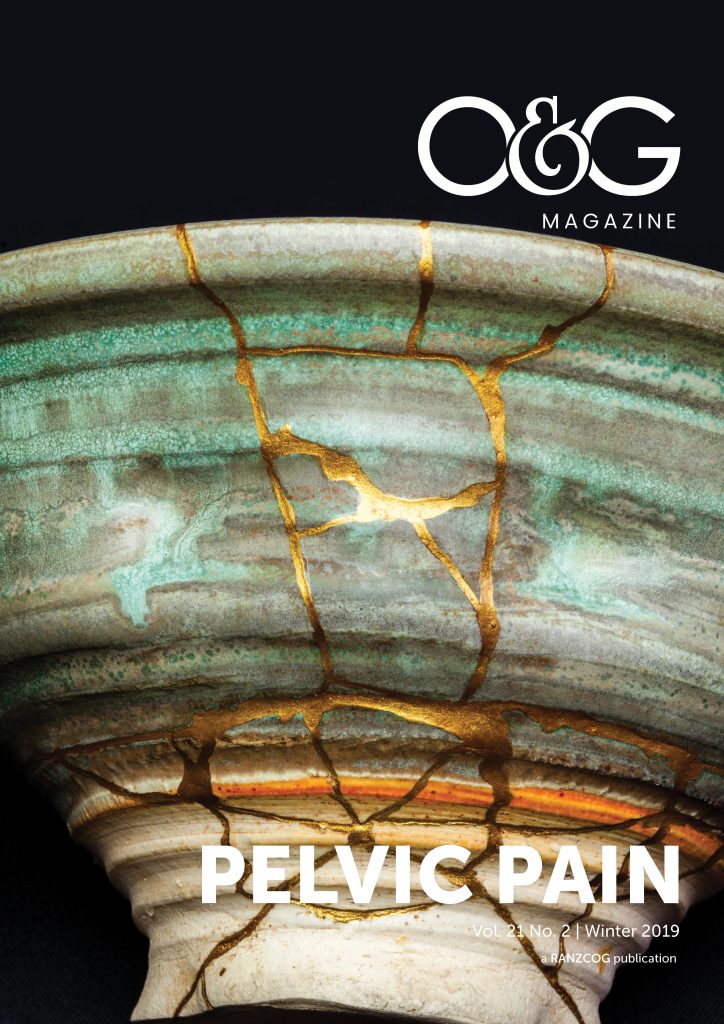Historically, maternal perception of fetal movements, called ‘quickening’, was likely the first clinical sign of a live pregnancy. These movements are usually noticed between 18 and 20 weeks, but may be well after 20 weeks in a first pregnancy or as early as 16 weeks in subsequent ones. The definition of ‘normal’ fetal movements is difficult as women perceive the sensation differently and one woman’s description of fetal activity may not apply to another. The focus on noting a reduction in fetal movements (RFM) has become a topic of interest as a way of identifying fetuses at risk of stillbirth in time to act and prevent a tragic outcome. Stillbirth affects 2500 families in Australia and New Zealand annually1 2 and the majority of women experiencing a stillbirth noted such a reduction prior to diagnosis.3
Various bodies (RCOG, RANZCOG, PSANZ) have guidelines about RFM. Currently, these guidelines assume that acting on RFM will avoid stillbirths and, to that end, all mention women should be educated about the need to monitor fetal movements by being given verbal and written information about such. Fetal movements should be felt by 24 weeks and note taken of RFM from 28 weeks. Actual counting of the number of fetal movement (as in the previously used Cardiff Kick Charts) is not advised as this has been shown to raise maternal anxiety levels. More emphasis is now placed on an individual woman’s perception of the pattern of her own baby’s movements.
Once the problem has been acknowledged, the recommended urgency of action varies, with PSANZ recommending a woman immediately contact her caregiver after noticing RFM and the RCOG Green Top guideline recommending she lies down on her side for two hours and then act if the baby is still quiet. Community-based organisations, such as Still Aware (stillaware.org), have an online presence and distribute written material urging women to ‘bond with your bump’ daily and ‘if anything seems different or irregular contact your healthcare provider immediately, no matter what time of the day.’
Recommendations for management after presentation beyond 28 weeks gestation all begin with auscultation of the fetal heart and performance of a CTG. Assessment is then made of other causes of RFM, such as medication (opioids, sedatives, methadone) or fetal malformations (check that a morphology ultrasound has been performed). Stillbirth risk factors, such as maternal medical conditions, previous intrauterine growth restriction, smoking, advanced maternal age, IVF, BMI greater than 25, should be assessed.
In the presence of continued RFM or other clinical problems, an ultrasound scan is recommended for fetal biometry, amniotic fluid assessment, and if possible, middle cerebral artery dopplers. The timing of such a scan must obviously depend on the availability of appropriate resources. PSANZ alone seems to recommend a Kleihauer to exclude fetomaternal haemorrhage.
The management aspects of these guidelines may need to be reviewed in light of the evidence from the AFFIRM Trial published in the Lancet in November 2018.4 This involved 400 000 pregnancies from 33 hospitals, in which women were told to monitor changes in fetal movements from 24 weeks and should refer themselves immediately if they detected altered movements after 28 weeks. The control group were given usual care and the primary outcome was stillbirth. The results show a slight decrease in the stillbirth rate from 44 per 10 000 births after standard care to 41 per 10 000 births with the intervention, but this drop was too small to prove that the intervention was beneficial. Other outcomes noted were an increase in induction of labour from 35.8–40.7 per cent, caesarean section from 25.5–28.3 per cent and preterm birth from 8.1–8.6 per cent, with the flow on of more prolonged admissions to the neonatal nursery. This led to a published comment about these data in the same journal from Walker and Thornton5 who assert that ‘encouraging awareness of fetal movements is harmful’. They suggest that, on the basis of the current evidence, we should not encourage programs that promote awareness of preterm RFM and tighten guidelines that lead to delivery based on RFM alone.
Two other cluster trials are currently in progress: ‘Mindfetal’ involving 39 000 women in Sweden and ‘My Baby’s Movements’ in Australia. The latter began in August 2016. It involves 27 hospitals, 256 700 births over three years, and is a stepped wedge cluster-randomised trial. The package of intervention involves a smart phone app, which women receive after 28 weeks, that asks them to log their fetal movements daily. It also provides them with information and prompts about fetal activity and is intended to support them in making decisions about seeking care if RFM occurs. This has been going for several months at the Royal Women’s Hospital, Melbourne, and so far, only 30 per cent of those patients logging an interest have started using the App when sent a link at 28 weeks (personal communication).
So where does that leave us with respect to advising our patients? Anyone touched by stillbirth, either personally or professionally, hopes there will be a way to reduce the incidence of this event and many are vocal in producing resources that encourage women to act. Clinicians all have anecdotal stories about women who present out of the blue with RFM and a critical CTG leads to urgent delivery and, we presume, a saved life. The flipside is women who lose a baby feeling guilty that they didn’t present in time. Many pregnancy blogs and websites have advice along these lines.
In light of the AFFIRM trial, current guidelines still stand, but maybe we should pause and await better evidence regarding promoting urgent action on the basis of RFM alone, especially preterm, in order to avoid unnecessary interventions and inductions.
References
- Perinatal and Maternal Mortality Review Committee (PMMRC). Tenth Annual Report of the Perinatal and Maternal Mortality Review Committee: Reporting Mortality 2014. Wellington: Health Quality and Safety Commission, 2016 Contract No.: ISBN 978-0-908345-29-8.
- Australian Institute of Health and Welfare. Australia’s mothers and babies 2014—in brief. Canberra: AIHW, 2016.
- T Stacey, JM Thompson, EA Mitchell, et al. Maternal perception of fetal activity and late stillbirth risk: Findings from the Auckland Stillbirth Study. Birth. 2011;38:311-16.
- JE Norman, EPA Heazell, A Ridriguez, et al. Awareness of fetal movements and care package to reduce fetal mortality (AFFIRM): a stepped wedge, cluster-randomised trial. Lancet. 2018:392;1629-38.
- KF Walker, JG Thornton. Encouraging awareness of fetal movements is harmful. Lancet. 2018;392;1601-2.






Leave a Reply